Diaspora
Diaspora (Greek for "dispersion"): indication for the Jews living outside the land of Israel. The Hebrew word is Tefutsot.
Origins of the Dispersion
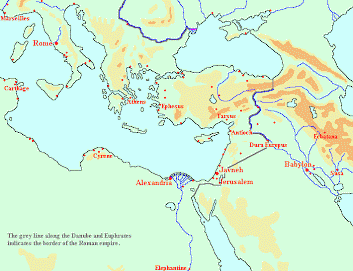
The first known Jewish communities outside the land of Israel date back to the seventh century BCE, when, from the reign of Psammetichus I (r.664-610) on, Jewish mercenaries garrisoned Elephantine in southern Egypt against the Kushite kingdom in modern Sudan. The soldiers had a temple of their own, where they venerated their god Yaho and his consort. This is interesting because it shows that monotheism was, at that stage, not yet crystallized out, and that the temple of Jerusalem was not yet considered to be the only place for worship. This military settlement still existed in the fifth century BCE, although by then, the mercenaries were serving the Persian kings who had occupied Egypt in 525 BCE.
Much more important is the Jewish community of Babylonia. In 587, the Babylonian king Nebuchadnezzar had captured Jerusalem and deported the Jewish elite to Mesopotamia. This period is called the exile (Golah). However, his successor Nabonidus was defeated by the Persian king Cyrus the Great (539), who allowed the exiled Jews to return home (texts). But many of them preferred to stay in wealthy Babylonia and refused to go home. This was the beginning of the Jewish community of Iraq and Iran, which existed until very recently.
Jews in the Hellenistic world
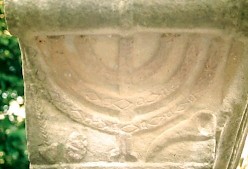
A second impulse for the Jews to go abroad was the foundation of Alexandria in Egypt by Alexander the Great (331 BCE). Under the next Egyptian kings, the Ptolemies, Jewish mercenaries and merchants settled in the capital of the country along the Nile. Several other communities in the Ptolemaean empire are known: e.g., at Pelusium, Leontopolis, and Cyrene. According to Philo, a Jewish author from the early first century CE, about a million Jews were living in Egypt.
They spoke Greek; therefore, the Bible was translated (the Septuagint). In many diasporic communities, this text was to become more authoritative than the Hebrew text.
Judaea was a province of the Ptolemaic Empire until 200; in that year, the Seleucid kings of Syria conquered the land of Israel. During the next generation, we find Jews in several towns in the Seleucid empire: e.g., Tyre, Sidon, Damascus, and Antioch.
Jews in the Roman world
The Jews were now part of a larger world, and it comes as no surprise to read about a community in Rome in the 160s. A century later, Judaea became part of the Roman Empire (more). Many Jews were deported to Italy, giving an additional boost to the Roman community.
The Roman dictator Julius Caesar had a benign policy towards the Jews; when he was assassinated (44 BCE), the Jews were among those who mourned most excessively. However, their position did not deteriorate, because Caesar's adoptive son Augustus continued the policy of his father. We know that in several Greek towns, the rights of the Jews were laid down in laws, e.g. the following decree from Halicarnassus.
Decree of the people, upon the representation of Marcus Alexander.
Since we have ever a great regard to piety towards God, and to holiness; and since we aim to follow the people of the Romans, who are the benefactors of all men, and what they have written to us about a league of friendship and mutual assistance between the Jews and our city, and that their sacred offices and accustomed festivals and assemblies may be observed by them; we have decreed, that as many men and women of the Jews as are willing so to do, may celebrate their Sabbaths, and perform their holy offices, according to Jewish laws; and may make their synagogues at the sea-side, according to the customs of their forefathers; and if any one, whether he be a magistrate or private person, hinders them from so doing, he shall be liable to a fine, to be applied to the uses of the city.
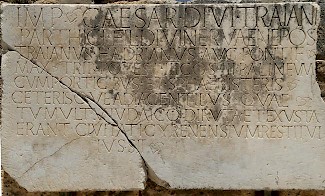
The relations between the Jews and the autochthone population, however, was not always peaceful. For example, in Alexandria in 38 CE, a terrible pogrom took place (more). In 115-117, the Jews of the Diaspora revolted against the Roman emperor Trajan (more).
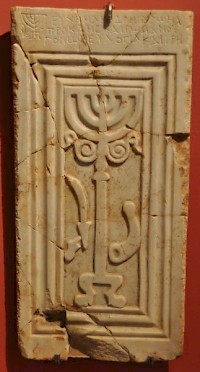
The Diaspora grew large after 70, when the Romans destroyed the Temple of Jerusalem and deported many Jews to Syria and Italy (more). However, others remained in Judaea, where rabbi Yohanan ben Zakkai founded the Academy of Javneh. Maybe more than the Temple had ever been, this was the spiritual center of Judaism: after all, the communities in the Diaspora had not always maintained the same practices as in Jerusalem, but they were more willing to listen to "Javneh" (or its successor academies, Sepphoris and Tiberias). An indication that the diasporic Jews were more willing to look for guidance in Judaea, is the increase of burials from diasporic Jews in the land of Israel.
The Academy sent teachers abroad to inform the diasporic Jews about the new ideas that are known as rabbinical Judaism. Sometimes, they were resisted: for example, it is known that the leader of the Roman community, a man named Thaddaeus, refused to follow the rabbinical directives on the preparation of the paschal lamb. Instead, he preferred the way it had been done in the Temple. Nonetheless, the relations between "Rome" and "Judaea" remained friendly.
Already in the first century CE, Judaism had spread to Hispania; in the early fourth century, there was a Jewish community in Cologne in Germania Inferior. Being Jewish was by now more or less accepted in the Roman world, which can be exemplified with the Collatio, a book in which Roman and Jewish laws were compared for the benefit of Roman judges. This situation changed, however, when the empire became Christian; the Christian authorities could sometimes make Jewish life difficult. For example, in 388 intermarriage was forbidden, in 399 missionary activity outlawed, c.425 an end was made to the Academy, and a pogrom in Antioch was not prevented.
Late Antiquity
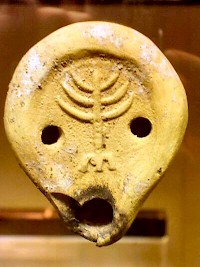
At the end of the fourth century, the rabbinical traditions of Judaea were written down in the Palestinian Talmud. This could have become the authoritative commentary on the Law of Moses and the Mishnah, but things turned out differently. By now, Babylonia was part of the Sasanian empire, which was ruled by kings who adhered to the Zoroastrian faith. In the late fifth century, Jews in that area were forced to flee, and some scholars wrote down their threatened traditions: the Babylonian Talmud, which is larger than its Palestinian twin, and has become more authoritative. This shows that the diasporic Jews had ideas of their own, which could become very influential.
In the fifth and sixth centuries, several Arab tribes converted to Judaism. For example, the powerful kingdom of Himyar in Yemen was briefly ruled by a Jewish king. Earlier, the Falasha's of Ethiopia had become Jews (in 327?).
In the Middle Ages, the two main branches of modern Judaism originated: the Ashkenazim (in France and Germany, later in eastern Europe) and the Sephardim (in Spain and the Mediterranean). The Jews who had remained in the land of Israel, or lived in Iraq or Yemen are usually reckoned to the Sephardim. However, there are still communities that retain archaic traits and have traditions that are neither Ashkenazic nor Sephardic, like the Jews of Rome. Their roots can be found in the Diaspora, in a time before the rabbinical Judaism existed.